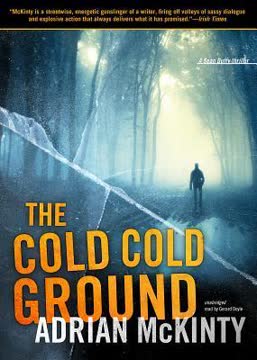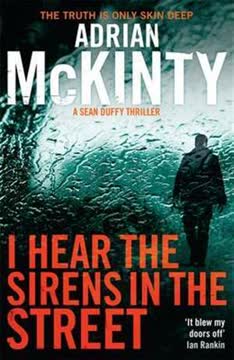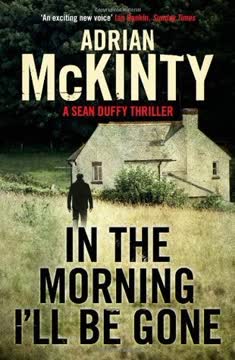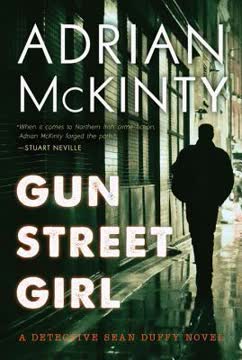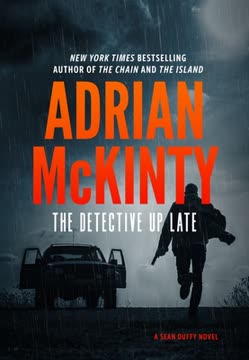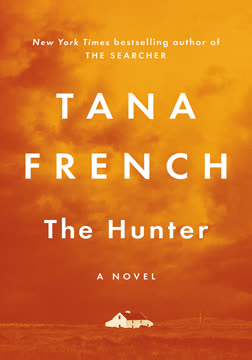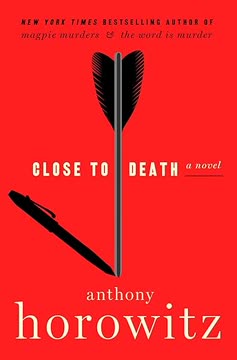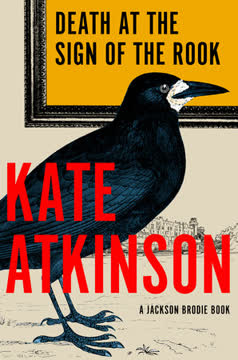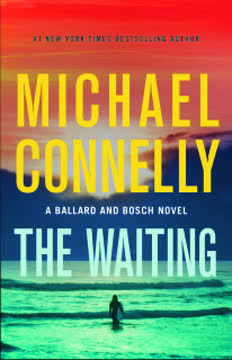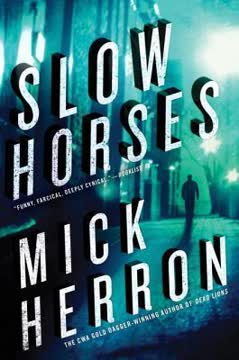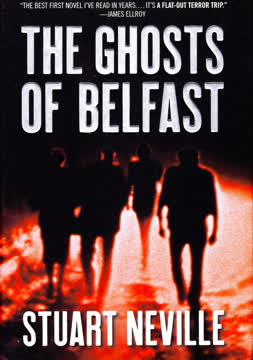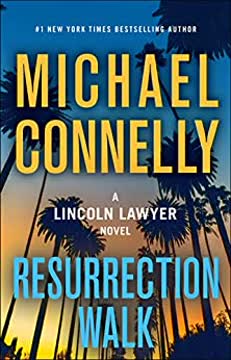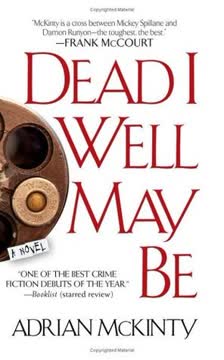Plot Summary
Riot's Chaotic Dance of Flames
In the turbulent streets of Belfast, Detective Sergeant Sean Duffy stands on Knockagh Mountain, witnessing the city engulfed in flames and unrest. The recent death of hunger striker Bobby Sands has intensified the city's tensions, but the current chaos seems orchestrated, lacking the raw emotion of Sands' passing. As a Catholic in the predominantly Protestant Royal Ulster Constabulary, Duffy navigates the complexities of his role amidst the chaos. The rain-soaked night reflects the city's volatile state and the precarious balance of power, setting the stage for the challenges Duffy will face.
A Murder's Grisly Discovery
Duffy is called to a crime scene where a young man's body is discovered in a burnt-out car, shot and with a severed hand. The grim tableau suggests the victim was a low-ranking paramilitary informer. Despite the city's unrest, Duffy is determined to uncover the truth behind the murder. The investigation begins amidst the backdrop of a city on edge, with Duffy piecing together evidence that hints at a deeper conspiracy.
The Killer's Cryptic Message
Duffy receives a taunting postcard from the killer, filled with cryptic language and references to Greek mythology. The message suggests a twisted connection between Duffy and the murderer, who claims to pity rather than hate his victims. The killer's intellectual approach unsettles Duffy, challenging his skills and understanding of the criminal mind. This personal communication sets the stage for a dangerous game of cat and mouse.
Secrets of the Dead
Dr. Laura Cathcart, the pathologist, uncovers disturbing details during the autopsies. The first victim, Tommy Little, was raped before his death, with a piece of music found in his body. The second victim, Andrew Young, a music teacher, was also killed execution-style, with music left at the scene. These bizarre elements suggest a pattern, but the motive remains elusive, adding layers of complexity to the investigation.
A Web of Deception
Duffy delves into the victims' backgrounds, uncovering connections to the IRA and UVF. Tommy Little, initially thought insignificant, is revealed to have a more significant role within the IRA. The investigation is fraught with resistance from paramilitaries, as Duffy's pursuit of truth leads him into Belfast's underworld, where alliances are fragile and danger lurks at every turn.
The Maze of Motives
Duffy navigates the labyrinthine connections between the victims, uncovering a network of deceit and betrayal. The killer's choice of victims and symbolic use of music suggest a personal vendetta, but the reasons remain hidden. Political tensions and reluctant witnesses hamper the investigation, turning it into a race against time as the killer threatens to strike again.
A Desperate Search for Truth
Determined to solve the case, Duffy confronts paramilitaries, seeking answers and challenging their silence. The investigation takes a toll on him, as he grapples with the moral complexities of his role and the city's divided loyalties. As the puzzle pieces come together, Duffy realizes the killer's motives are deeply rooted in the city's troubled history, forcing him to confront uncomfortable truths.
A Dangerous Game of Deception
Caught between his investigation and Belfast's political machinations, Duffy realizes the case is more complex than it appears. High-ranking IRA members and a potential serial killer complicate matters. Duffy must balance his pursuit of justice with maintaining fragile alliances that could aid or hinder his investigation, navigating a dangerous game of deception.
Secrets Unravel in the Shadows
Duffy uncovers cryptic messages and clues suggesting a deeper conspiracy. A burnt-out car and coded messages lead him to suspect the murders are part of a larger plot. His investigation takes him into Belfast's criminal underworld, where deceit and betrayal abound. With each revelation, the stakes grow higher, and Duffy realizes he's unraveling a conspiracy with far-reaching implications.
The Hunter Becomes the Hunted
As Duffy closes in on the killer, he becomes a target himself, navigating a deadly game of cat and mouse. With his life on the line, Duffy must use all his skills to outmaneuver his adversaries. The hunter becomes the hunted as the investigation reaches a critical juncture, forcing Duffy to confront the possibility that the killer is closer than he imagined.
Truths Revealed in the Darkness
Duffy uncovers a shocking truth that changes the course of his investigation. The revelation of a high-level informant within the IRA forces him to reconsider everything he thought he knew. As the puzzle pieces fall into place, Duffy confronts the reality that the conspiracy runs deeper than imagined, with the truth finally within reach.
A Final Confrontation Unfolds
In a tense climax, Duffy confronts the mastermind behind the murders. The final confrontation is a battle of wits and wills, as Duffy must outsmart a cunning adversary. With lives hanging in the balance, Duffy makes a choice that determines the investigation's outcome and his future. As the dust settles, he grapples with the consequences of his actions and the knowledge that justice has been served, but at a great personal cost.
Characters
Sean Duffy
Detective Sergeant Sean Duffy is a Catholic officer in the predominantly Protestant Royal Ulster Constabulary. Intelligent and resourceful, he is driven by a strong sense of justice. Duffy navigates the complexities of his role amidst the sectarian violence of 1980s Belfast. His determination to solve the murders is fueled by a desire to prove himself in a hostile environment. Despite personal complications and constant threats, Duffy remains focused on uncovering the truth.
Laura Cathcart
Dr. Laura Cathcart is the pathologist responsible for the autopsies of the murder victims. Intelligent and confident, she challenges Duffy's assumptions. Her findings reveal unsettling details, adding complexity to the case. Laura's professional demeanor masks a personal connection to Duffy, hinting at a deeper relationship. Her expertise is crucial, providing Duffy with insights needed to piece together the killer's motives.
Tommy Little
Tommy Little is the first murder victim, a young man with IRA connections. Initially thought insignificant, he held a more significant role within the organization. His brutal murder, with evidence of sexual assault and a severed hand, is a catalyst for the investigation. Duffy uncovers a complex web of relationships and secrets surrounding Tommy, emblematic of the city's hidden undercurrents and dangers.
Andrew Young
Andrew Young is the second murder victim, a music teacher known for his community contributions. His methodical murder, with music left at the scene, suggests a connection to the killer's twisted sense of justice. Young's discreet homosexuality becomes a focal point, highlighting societal prejudices and risks faced by those outside accepted norms.
Freddie Scavanni
Freddie Scavanni is a Sinn Fein press officer and high-ranking IRA member, secretly an MI5 informant. A master manipulator, he plays both sides to his advantage. His involvement in the murders is driven by a desire to protect his interests and maintain his cover, revealing a complex web of deceit and betrayal in the dangerous world of espionage and political intrigue.
Billy White
Billy White is a Protestant paramilitary leader known for violence and intimidation. Deeply entrenched in the criminal underworld, he uses his position to further his interests. White's involvement in the murders is driven by a desire to protect his secrets and maintain power. His relationship with Shane Davidson adds complexity, as Duffy uncovers hidden connections between victims and killers.
Shane Davidson
Shane Davidson is a young man with ties to both the IRA and Protestant paramilitaries. Caught in a web of deceit and betrayal, he struggles to navigate his dangerous world. Shane's relationship with Tommy Little and involvement in the murders reveal a complex character, driven by a desire for acceptance and belonging, with actions that have far-reaching consequences.
Plot Devices
The Killer's Postcard
The killer sends a postcard to Duffy, filled with cryptic language and Greek mythology references. This plot device personalizes the conflict between Duffy and the murderer, suggesting a twisted connection. The postcard challenges Duffy's understanding of the case, forcing him to consider the killer's motives and methods, adding psychological complexity to the narrative.
Musical Scores
The killer leaves pieces of music at crime scenes, each with a specific connection to the victims. This plot device adds a symbolic layer to the murders, suggesting a deeper, intellectual motive. The choice of music reflects the killer's mindset and provides Duffy with clues to unravel the mystery, linking victims and actions while highlighting cultural and societal themes.
Analysis
"The Cold Cold Ground" by Adrian McKinty is a masterful blend of crime fiction and historical narrative, set against the backdrop of 1980s Belfast. The novel delves into the complexities of identity, loyalty, and justice amidst the sectarian violence of the Troubles. Through the character of Sean Duffy, McKinty explores the moral ambiguities faced by those caught in the crossfire of political and personal conflicts. The use of music and mythology as symbolic plot devices adds depth to the narrative, highlighting the intellectual and cultural undercurrents of the investigation. The novel's exploration of societal prejudices and the personal toll of conflict offers a poignant commentary on the human condition, making it a compelling and thought-provoking read.
Last updated:
FAQ
0. Synopsis & Basic Details
What is The Cold Cold Ground about?
- A Detective's Baptism by Fire: Set in Northern Ireland in 1981, the novel follows Detective Sergeant Sean Duffy, a Catholic RUC officer, as he navigates the intense sectarian violence of the Troubles during the IRA hunger strikes. He's tasked with investigating a series of brutal murders that initially appear to be paramilitary executions but quickly reveal a disturbing, non-sectarian pattern.
- Unraveling a Twisted Mystery: Duffy's investigation begins with the discovery of a young man's body, shot and with a severed hand, leading him into a labyrinth of hidden motives, cryptic clues, and unexpected connections. The case escalates with more victims, all homosexual men, forcing Duffy to confront societal prejudices and the limitations of a police force stretched thin by civil unrest.
- A Personal and Political Gauntlet: As Duffy delves deeper, he receives taunting messages from the killer, drawing him into a dangerous psychological game. The murders become intertwined with high-stakes political intrigue, forcing Duffy to question loyalties, challenge authority, and ultimately risk his own life to uncover a truth far more complex and disturbing than he could have imagined.
Why should I read The Cold Cold Ground?
- Immersive Historical Thriller: Readers seeking a crime novel deeply embedded in a specific historical context will find McKinty's portrayal of 1981 Northern Ireland gripping. The backdrop of the hunger strikes, riots, and political tension isn't just scenery; it's a living, breathing character that shapes every aspect of the plot and characters, offering a unique blend of historical fiction and police procedural.
- Complex Moral Landscape: The novel excels in presenting a morally ambiguous world where traditional notions of good and evil are blurred. Sean Duffy, a Catholic in the Protestant-dominated RUC, constantly grapples with his identity and the compromises required to seek justice in an unjust society. This psychological depth and ethical dilemma make for a profoundly thought-provoking read.
- Intricate Plot & Rich Symbolism: Beyond the thrilling plot, McKinty weaves in layers of literary and musical symbolism, inviting readers to engage with the story on a deeper intellectual level. The killer's cryptic messages, classical music references, and allusions to mythology add a unique interpretive challenge, rewarding close reading and discussion.
What is the background of The Cold Cold Ground?
- The Troubles' Peak in 1981: The novel is set during a particularly volatile year in Northern Ireland, dominated by the IRA hunger strikes in the Maze Prison. This period saw widespread rioting, bombings, and assassinations, pushing the region to the brink of civil war. The author, Adrian McKinty, grew up in Carrickfergus in 1968 and vividly recalls the claustrophobic atmosphere and breakdown of civilization, directly influencing the novel's setting and tone.
- Sectarian Divide & Police Force Dynamics: Sean Duffy's identity as a Catholic RUC officer is central to the narrative. The RUC (Royal Ulster Constabulary) was predominantly Protestant, and Catholic officers like Duffy were rare and often viewed with suspicion by both sides. This internal conflict within the police force, coupled with external pressures from paramilitaries and the British government, forms a crucial socio-political backdrop.
- Homosexuality's Illegality: A key element of the historical context is the illegality of homosexual acts in Northern Ireland in 1981, punishable by up to five years in prison. This legal and societal prejudice significantly impacts the investigation into the murders of gay men, creating an environment where victims are marginalized and the police are reluctant to pursue leads that might expose "deviant" behavior.
What are the most memorable quotes in The Cold Cold Ground?
- "I'd love to see things from your point of view but I can't get my head that far up my arse.": This early retort from Duffy to Constable Price (Chapter 1) perfectly encapsulates his sardonic wit and defiant attitude. It highlights his intellectual superiority and refusal to tolerate bigotry, immediately establishing him as an outsider within his own force and a character who speaks his mind, regardless of consequence.
- "Your tiny hand is frozen. Let me warm it for you. What's the use of looking? We won't find it in the dark. But luckily it's a moonlit night, and the moon is close to us.": The translation of the Puccini aria (Chapter 2) found with the first victim is chillingly poetic. It serves as a direct, taunting message from the killer, revealing his intellectual arrogance and the macabre symbolism he weaves into his crimes, directly referencing the severed hand and the hidden nature of his deeds.
- "War is so much easier than this business that we're in. You know who your friends are and, most of the time, who your enemies are. Usually they're the ones shooting at you.": Spoken by MI5 agent Peter Evans (Chapter 22), this quote distills the novel's core theme of moral ambiguity and the blurred lines of conflict in Northern Ireland. It underscores the complex, often invisible, nature of the "wilderness of mirrors" Duffy operates in, where identifying true allies and adversaries is a constant, perilous challenge.
What writing style, narrative choices, and literary techniques does Adrian McKinty use?
- Hardboiled Noir with Literary Depth: McKinty employs a classic hardboiled detective style, characterized by Sean Duffy's cynical first-person narration, dry wit, and unflinching portrayal of violence. This is elevated by literary allusions, classical music references, and philosophical musings, creating a unique blend of genre fiction and intellectual exploration.
- Immersive First-Person Perspective: The narrative is told entirely from Sean Duffy's perspective, immersing the reader directly into his thoughts, anxieties, and observations. This choice allows for a deeply personal and subjective experience of the Troubles, highlighting Duffy's isolation and the psychological toll of his work, while also providing his unique, often sarcastic, commentary on events.
- Sensory-Rich and Atmospheric Prose: McKinty's writing is highly atmospheric, using vivid sensory details to bring 1981 Northern Ireland to life. Descriptions of the "oleaginous Belfast rain," the "smell of peat smoke," and the visual chaos of riots create a palpable sense of place and time, grounding the complex plot in a gritty, realistic environment.
1. Hidden Details & Subtle Connections
What are some minor details that add significant meaning?
- The "S" on Lucy Moore's Envelope: A seemingly insignificant detail—the faint imprint of an "S" on an envelope Lucy Moore sent to her sister (Chapter 19)—becomes a crucial, almost overlooked, clue. This subtle mark, left by a heavy-handed writer addressing a stack of envelopes, points directly to Freddie Scavanni ("S" for Scavanni), revealing his hidden connection to Lucy and her disappearance, a detail easily missed by readers focused on the letter's content.
- The Killer's Typewriter Model: Matty's forensic work identifies the killer's typewriter as an "old manual Imperial 55" (Chapter 6). This specific detail, while seemingly technical, later gains significance when Duffy considers who would have learned to type flawlessly on such a machine—police officers and journalists like Freddie Scavanni. It subtly narrows the suspect pool to individuals with specific professional backgrounds, hinting at the killer's identity long before it's revealed.
- The Kilroot Power Station as a Motif: The Kilroot Power Station, with its "sixty-storey chimney, an enormous penile tumour" (Chapter 22), is a recurring landmark. Beyond its literal presence, it symbolizes the industrial decay and environmental blight of the region, mirroring the moral and societal corruption Duffy investigates. Its phallic imagery also subtly connects to the sexual nature of the crimes and the killer's twisted motivations.
What are some subtle foreshadowing and callbacks?
- Duffy's "Serpico Moustache" Contemplation: Early in the novel, Duffy repeatedly considers growing a "Serpico moustache" (Chapter 1, 2). This seemingly trivial detail foreshadows his eventual transformation into a maverick detective, willing to defy authority and conventional police procedure, much like the iconic Frank Serpico. It hints at his growing disillusionment and his readiness to operate outside the system to achieve justice.
- The "Thin Blue Line" Metaphor: Chief Inspector Brennan's impassioned speech about the RUC being "the thin blue line" (Chapter 1) is a direct callback to the novel's initial chapter title. This phrase, meant to inspire, ironically highlights the RUC's stretched resources and moral compromises. Duffy later reinterprets it as the "thin green line" (Chapter 2), acknowledging his Catholic identity and the complex, often contradictory, loyalties he embodies, subtly undermining the official narrative.
- Icarus and Daedalus Allusions: Victor Combs's cryptic remark, "I flew too close to the sun" (Chapter 14), directly references the myth of Icarus, son of Daedalus, the builder of the labyrinth. This callback, combined with the killer's own use of "labyrinth" in his postcard (Chapter 5), subtly foreshadows the themes of ambition, hubris, and inevitable downfall that permeate the narrative, linking the killer's intellectual arrogance to classical tragedy.
What are some unexpected character connections?
- Freddie Scavanni and George Seawright's Shared Office Building: The discovery that Sinn Fein press officer Freddie Scavanni and DUP Councillor George Seawright share offices in Bradbury House (Chapter 15) is a shocking revelation. These two figures represent the extreme ends of the sectarian divide, making their proximity highly unusual and hinting at a deeper, clandestine cooperation or manipulation that transcends public political animosity, foreshadowing Scavanni's true role.
- Billy White's Rhodesian Police Background: The revelation that Protestant paramilitary leader Billy White served in the Rhodesian police (Chapter 11) is an unexpected detail. This connection suggests a shared history of state-sanctioned violence and counter-insurgency tactics, linking the seemingly disparate worlds of colonial policing and paramilitary activity. It implies a professional ruthlessness and a potential network of ex-Rhodesian officers within the RUC, adding a layer of institutional corruption.
- Lucy Moore's Midwife as a Victim: The casual confession by Freddie Scavanni that he "disappeared" Lucy Moore's midwife (Chapter 24) is a chilling, unexpected connection. This reveals a previously unknown victim and underscores Scavanni's ruthless efficiency in eliminating loose ends. It highlights the hidden human cost of his elaborate cover-up, extending the web of murder beyond the initial "serial killer" narrative.
Who are the most significant supporting characters?
- Sergeant Alan McCallister: More than just a senior colleague, McCallister acts as a pragmatic mentor and a moral compass for Duffy, especially in navigating the RUC's internal politics and public relations. His "old-school" wisdom and surprising media savvy (Chapter 9) provide a foil to Duffy's intellectual intensity, offering a grounded perspective on police work and the realities of the Troubles.
- Detective Constable "Crabbie" McCrabban: Crabbie serves as Duffy's loyal, if sometimes reluctant, partner. His down-to-earth, conservative Protestant background and dry humor provide a constant counterpoint to Duffy's Catholic, university-educated worldview. His unwavering support and practical skills are essential to Duffy's investigation, highlighting the possibility of cross-community cooperation amidst division.
- Chief Inspector Tom Brennan: Brennan is Duffy's immediate superior, a complex figure who embodies the RUC's internal struggles. He is both a protector and a constraint for Duffy, initially giving him autonomy but later reining him in due to political pressure. His personal investment in the Lucy Moore case (Chapter 6) reveals a deeper humanity beneath his gruff exterior, showcasing the personal toll of the Troubles on even senior officers.
2. Psychological, Emotional, & Relational Analysis
What are some unspoken motivations of the characters?
- Freddie Scavanni's Drive for Power and Recognition: Beyond his MI5 handler's directives, Freddie's elaborate scheme to cover up Lucy and Tommy's murders is fueled by a deep-seated ambition to ascend the IRA ranks and prove his intellectual superiority. His meticulous planning and taunting messages to Duffy suggest a desire for recognition, even from his adversaries, as a master manipulator, as revealed in his self-congratulatory monologue (Chapter 24).
- Duffy's Quest for Personal Redemption: Duffy's relentless pursuit of the killer, even after being taken off the case, is driven by an unspoken need for personal redemption. The "incident" of the Rose and Crown bombing (Chapter 2) that led him to join the RUC instilled in him a profound desire to "be some small part of ending this madness." Solving this complex case becomes his way of making sense of the chaos and atoning for his past neutrality.
- Laura Cathcart's Search for Connection: Laura's initial reluctance to engage with Duffy, followed by her growing involvement in the case and their relationship, hints at an unspoken desire for connection and meaning beyond her professional life. Her decision to return to Northern Ireland despite opportunities abroad (Chapter 2) and her empathy for the victims suggest a yearning to contribute to a society grappling with profound trauma, finding solace in shared purpose with Duffy.
What psychological complexities do the characters exhibit?
- Duffy's Existential Disillusionment: Sean Duffy grapples with profound existential disillusionment, particularly evident in his internal monologues about the futility of his work and the cyclical nature of violence. His sardonic humor and intellectual detachment serve as coping mechanisms against the overwhelming absurdity and brutality of the Troubles, as seen when he muses, "This was a city poisoning its own wells, salting its own fields, digging its own grave…" (Chapter 2).
- Freddie Scavanni's Sociopathic Grandiosity: Freddie exhibits classic sociopathic traits: a lack of empathy, manipulative charm, and a grandiose sense of self-importance. His ability to casually recount multiple murders, including that of Lucy and her midwife, while simultaneously expressing pride in his "outsmarting" the police and IRA (Chapter 24), reveals a chilling detachment from human suffering and a profound narcissism.
- The Collective Trauma of Northern Ireland: The characters, both police and civilians, display psychological complexities rooted in the collective trauma of the Troubles. From Mrs. Campbell's casual racism (Chapter 1) to the paramilitary enforcers' hardened indifference (Chapter 10), the constant exposure to violence has normalized extreme behaviors and distorted moral perspectives, creating a society where "normal" is a constantly shifting concept.
What are the major emotional turning points?
- The Discovery of the "Wrong" Hand: The revelation by Dr. Cathcart that the severed hand found with Tommy Little's body belongs to a different person (Chapter 2) is a major emotional turning point for Duffy. It shatters his initial, conventional understanding of the crime as a simple paramilitary execution, forcing him to confront a far more disturbing and personal motive, igniting his deeper investigative drive.
- Duffy's Confrontation with Billy White's Crew: The violent encounter at Duffy's house, where he single-handedly fends off Billy White's assassination team (Chapter 21), is a critical emotional climax. This raw, visceral fight for survival strips away Duffy's intellectual detachment, forcing him to confront his own mortality and the direct, brutal consequences of his investigation, solidifying his commitment to justice.
- The MI5 Revelation and Freddie's Confession: The moment Duffy realizes Freddie Scavanni is an MI5 agent (Chapter 20) and subsequently extracts his full confession (Chapter 24) is the ultimate emotional turning point. It transforms the entire narrative, revealing the vast, cynical conspiracy at play and forcing Duffy to reconcile his pursuit of justice with the "big picture" of state-sanctioned manipulation, leaving him profoundly disillusioned.
How do relationship dynamics evolve?
- Duffy and Laura's Deepening Bond: Their relationship evolves from professional colleagues to intimate partners, forged in the crucible of shared trauma and moral compromise. Laura's initial professional distance gives way to emotional vulnerability and trust, culminating in her driving Duffy to Scavanni's house and witnessing his confrontation. Their shared secret about Freddie Scavanni (Chapter 20) binds them in a unique, perilous intimacy.
- Duffy's Shifting Authority with His Team: Duffy's relationship with McCrabban and Matty evolves from a somewhat detached leadership to a bond of mutual respect and loyalty. Initially, they are skeptical of his "book-learning" (Chapter 1), but as the case progresses, they come to trust his instincts and unconventional methods. Their willingness to defy Brennan's orders and assist Duffy in his rogue investigation (Chapter 19) demonstrates this deepened loyalty.
- The RUC's Internal Fissures: The novel highlights the evolving, often strained, dynamics within the RUC. Duffy, as a Catholic, is an anomaly, and his intellectual approach often clashes with the "old-school" Protestant officers. The case exposes the RUC's internal politics, its vulnerability to external pressures (from paramilitaries and the British government), and the moral compromises made to maintain order, culminating in Duffy's forced removal from the case by Special Branch (Chapter 18).
4. Interpretation & Debate
Which parts of the story remain ambiguous or open-ended?
- The True Extent of MI5's Manipulation: While Freddie Scavanni is revealed as an MI5 agent, the full scope of MI5's involvement and manipulation remains ambiguous. The question of whether they actively orchestrated or merely exploited the "gay serial killer" narrative to protect their asset is left open. Peter Evans's cryptic remarks about the "wilderness of mirrors" (Chapter 22) suggest a deeper, more cynical game where even Duffy's actions might have been subtly guided.
- Duffy's Future in the RUC: Despite being offered a medal and a promotion to Inspector, Duffy's long-term future in the RUC remains uncertain. His defiance of orders, his knowledge of MI5's operations, and his personal vendetta against Scavanni place him in a precarious position. The final scene, where he is mock-executed and warned to "watch his step" (Chapter 25), leaves his career path and personal safety open-ended, hinting at continued danger.
- The Psychological Impact on Laura Cathcart: Laura's emotional state after witnessing Duffy's confrontation with Scavanni and learning about his MI5 role is left largely unexplored. While she is "shivering" and asks, "What will happen to us if we talk?" (Chapter 20), the long-term psychological impact of this exposure to state-sanctioned murder and deception on her character is not fully resolved, leaving her future emotional well-being ambiguous.
What are some debatable, controversial scenes or moments in The Cold Cold Ground?
- Duffy's Sexual Encounter in the Public Toilets: Duffy's unexpected sexual encounter with a young rentboy in the Loughshore Park public toilets (Chapter 13) is highly controversial. This scene challenges conventional detective tropes and raises questions about Duffy's professional conduct, personal ethics, and sexual identity. It sparks debate about whether it's a moment of genuine vulnerability, a lapse in judgment, or a deliberate exploration of the very subculture he's investigating.
- The Justification of Freddie Scavanni's Actions: Freddie Scavanni's cold, calculated murders are presented as necessary evils to protect his MI5 cover and advance the "big picture" of ending the Troubles (Chapter 24). This raises a controversial ethical debate: can the murder of innocent civilians be justified for a greater political good? The novel forces readers to confront the uncomfortable reality of state-sanctioned violence and the moral compromises made in covert operations.
- The RUC's Handling of the "Gay Serial Killer" Case: The RUC's initial dismissal of the murders as "informer hits" and their subsequent eagerness to label it a "gay serial killer" case (Chapter 6, 9) is a controversial portrayal of institutional prejudice. This highlights the societal homophobia of the era and the police's willingness to accept a convenient narrative, even if it means ignoring deeper truths, sparking debate about police accountability and bias.
The Cold Cold Ground Ending Explained: How It Ends & What It Means
- The Unmasking of Stakeknife: The ending of The Cold Cold Ground reveals that Freddie Scavanni, the Sinn Fein press officer, is actually "Stakeknife," a high-ranking MI5 agent embedded within the IRA's Force Research Unit (Chapter 20). He orchestrated the "gay serial killer" murders as an elaborate smokescreen to cover up his killing of Tommy Little (the actual head of the FRU) and Lucy Moore (who discovered his MI5 receipts). Scavanni killed Tommy to take his position and Lucy because she was a witness. The subsequent "serial killer" attacks were designed to divert police attention and discredit Tommy Little's memory within the IRA, ensuring his death was attributed to a "sordid homosexual affair" rather than an internal power struggle.
- Justice Denied, Order Maintained: Duffy confronts Scavanni in Italy, forcing a confession at gunpoint. However, MI5 intervenes, revealing Scavanni's critical importance to British intelligence in ending the Troubles. Duffy is forced to sign the Official Secrets Act, effectively silencing him and ensuring Scavanni faces no legal repercussions for his murders. This ending powerfully illustrates the theme of justice being sacrificed for political expediency, where the "big picture" of state security overrides individual accountability. Duffy's personal quest for justice is thwarted by the machinations of a higher, unseen power.
- Duffy's Transformation and Lingering Trauma: Duffy returns to Carrickfergus, physically scarred and profoundly disillusioned. He is mock-executed by MI5 agents (Chapter 25) as a final warning, cementing his understanding of the "wilderness of mirrors" he inhabits. Despite the trauma, he is offered a promotion and a medal, symbolizing the state's attempt to co-opt and control his narrative. The ending leaves [Duffy](#sean-duffy
Review Summary
The Cold Cold Ground receives mostly positive reviews for its vivid portrayal of 1981 Northern Ireland during the Troubles. Readers praise McKinty's atmospheric writing, complex plot, and the compelling protagonist Sean Duffy, a Catholic detective in a Protestant-dominated police force. The book's blend of historical context, dark humor, and gritty crime fiction appeals to many. Some critics find the ending unsatisfactory, but overall, the novel is praised for its authenticity and engaging narrative. Many reviewers express eagerness to continue the series.
Detective Sean Duffy Series
Similar Books
Download PDF
Download EPUB
.epub digital book format is ideal for reading ebooks on phones, tablets, and e-readers.
